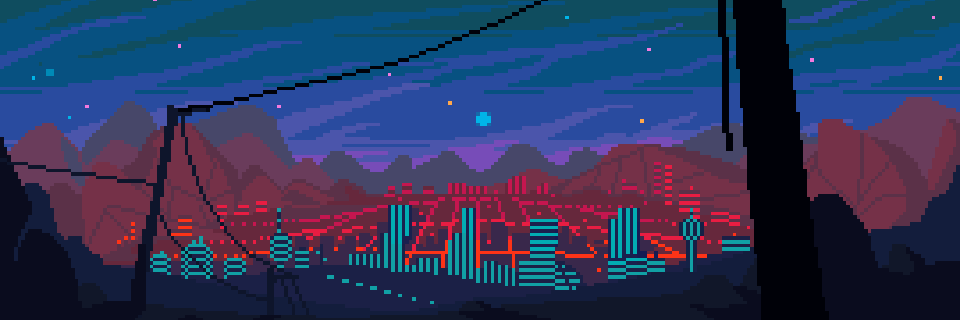Engadget has been testing and reviewing consumer tech since 2004. Our stories may include affiliate links; if you buy something through a link, we may earn a commission. Read more about how we evaluate products.
On Russian terraforming: The race to reshape our planet's future
What would it mean to abandon Earth wholesale? The proposition to throw one’s hands up and forfeit our planet is a seductive one — things are looking pretty irredeemably grim. As the world continues to self isolate and our climate crisis continues to spiral exponentially, so too does the desire to look wistfully outward into the pitch of night. Like an unhappily wed couple entering a midlife crisis, we tempt a collective fantasy; what would life be like on another planet?
The term “terraforming” made its debut quietly, nearly imperceptible to most, save the most dedicated of science fiction devotees. The first use of the term comes from a July 1942 issue of Astounding Science Fiction, in a short story titled Collision Orbit by Will Stewart (the nome de plume of Jack Wiliamson). Even there, the term is merely incidental — just a thing people did to asteroids, not wholly unlike Saint-Exupéry’s little prince.
Terraforming is defined today as the transformation of a planet so as to resemble Earth, especially so that it can support human life. As in so many classic affairs, the object of most of our extraplanetary speculation is our closest neighbor — Mars. Futurists like Elon Musk and Michio Kaku have expressed their fervent enthusiasm for settling the red planet, proposing everything from blowing up Martian ice caps with thermonuclear bombs to ejecting methane gas into the atmosphere. Hypothetically, either could result in a runaway greenhouse effect that would potentially make the Martian atmosphere one that could sustain life forms like you or me.
Leading scientists, however, not only refute the possibility of Martian terraforming but caution its ethics. Bruce Jakosky has been studying Mars and the Martian atmosphere since the 1970’s, working on scores of missions including Viking, Mars Observer, Mars Odyssey, Mars Science Laboratory. He is currently the principal investigator on the MAVEN mission, a satellite explorer that's been orbiting the planet since 2013. In 2018, Jakosky published a study in Nature that assessed whether the kind of Martian terraforming put forth by the Musks and Kakus of the world was even possible given what we know about the planet.
“I think it's a very dangerous idea to think that we can terraform Mars. It suggests that we don't have to take care of our own planet — that we can always abandon it. There's a great risk in thinking we can get away with something like that.”
“Our basic conclusion was that we cannot use CO2 to terraform Mars,” said Jakosky in a recent phone interview. “It’s not possible with current technology or anything approaching current technology and CO2 isn't abundant enough or even remotely easy to put into the atmosphere.”
In addition, Jakosky warned, “I think it's a very dangerous idea to think that we can terraform Mars. It suggests that we don't have to take care of our own planet — that we can always abandon it. There's a great risk in thinking we can get away with something like that.”
Meanwhile, universities, startups and even NASA continue to test alternate possibilities for off-world colonization — from pressurized egg-shaped habitats, to underground tube environments. But what if terraforming didn’t refer to an extraterrestrial planet at all? Given the severity of Earth's ecological devastation, it’s becoming more and more likely that it could be our own atmosphere that will require drastic action in order to restore ecological balance.
That’s where Moscow’s Strelka Institute comes in. Along with Pioneers for the Greater Holocene based in San Francisco, Strelka is part of a burgeoning global movement exploring how we might bring the imaginative and technological capacities of terraforming back home.

Russia 2.0
Founded by entrepreneur and philanthropist Alexander Mamut in 2009, the Strelka Institute is hardly what one might expect from a Russian university. With a mission to "educate the next generation of architects, designers, and media professionals, enabling them to shape the 21st century world,” it feels distinctly of the kind of heady cultural ilk affiliated with DIS Magazine and Hito Steyerl videos (i.e.: intellectually radical, politically egalitarian and decidedly "cool").
The Institute's urbanist educational program was crafted by the likes of famed Dutch artist and architectural theorist Rem Koolhaas; writer and researcher Anastassia Smirnova; and American sociologist and design theorist Benjamin H. Bratton — all international thought leaders that regularly make waves across elite online intellectual discourse.
Outside of the niche sphere that is cultural criticism, Bratton is likely best known for his iconoclastic 2013 TEDx Talk, “What's Wrong with TED Talks?” which offers a biting critique of the forum’s self-congratulatory and placebic progressivism. In the session, he declares, “TED is a proposition that if we talk about world-changing ideas enough, then the world will change. This, of course, isn’t true.”
Three years ago, Bratton developed a speculative urbanist think-tank at Strelka called The New Normal. There, interdisciplinary researchers from around the world worked collaboratively on projects focusing on the invention and articulation of new models and discourse for urbanism. It was from these projects that Bratton began Strelka’s current program, The Terraforming.
“For the New Normal, we were looking at different technologies and processes that one wouldn't ordinarily think of as urban design and tried to think of them in those terms,” explains Nicolay Boyadjiev, a Canadian architect, strategist and design tutor for both The New Normal and The Terraforming. “With The Terraforming, we basically took the opposite view.”
“Terraforming shouldn’t be about how we make Mars more Earth-like, it ought to be about making Earth more Earth-like.”
“Terraforming shouldn’t be about how we make Mars more Earth-like,” Boyadjiev explains. Instead, “it ought to be about making Earth more Earth-like. Since human beings invented agriculture, there has been a terraforming project. It's really not nature versus technology—it's a given that we're changing our environment. In a way, global warming is the result of an unplanned terraforming project.”
Currently in the midst of their inaugural semester, the Institute aims to reclaim the term “terraforming” in order to reconsider the meaning of terms like geo-engineering, agriculture, automation or infrastructure. Their manifesto-like mission statement reads, “instead of reviving ideas of ‘nature,' we will reclaim 'the artificial'—not as in ‘fake’, but rather ‘designed’ — as a foundation which links the mitigation of anthropogenic climate change to the geopolitics of automation.” In short, the program radically posits that there was never a nature to begin with; that this distinction itself is a kind of human technological intervention.
By moving past these false dichotomies, researchers hope to shift the way we think about nature so that we might begin to consider, for example, forests as a kind of infrastructure, trees as artifice. While this semester has just begun, projects that were developed for The New Normal might offer an idea of what’s to come from The Terraforming and the institute's new radical point of view.
One such project is Vault. Developed by 2019 cohorts Sofia Pia Belenky, Alyona Shapovalova, Don Toromanoff and Ksenia Trofimova, Vault is a film that explores what might happen if we included the sky above and geologic layers below as part of Earth's cartography; if our maps looked more like a slice of cake rather than a two-dimensional plane.
This holistic approach to territory, the Strelka researchers argue, offers a framework that could enable us to close the open loop of energy extraction and expenditure, comparing Russia and its resources as “a metabolism” that can be more efficiently adapted. It conceives of territory as a biometric box where, for example, burned fossil fuels stay trapped within the enclosure, forcing us to think about how we create more close-looped carbon cycles.
“By shifting this perspective,” says Belenksy, “we can create architecture that addresses material sourcing, energy, carbon capture, and deep time. Rather than thinking of the ground as a surface to build upon or as an extractive material source, we consider the ground as an absorptive architecture. Scaled to millions of trees, it’s an implementation of negative emission technologies that would in turn produce an economy of energy for Russia and beyond.”
“The research we began in this short film is something we will continue to return to,” Belensky adds. “The project is just beginning.”
While Strelka's Vault reconsiders land, MERA explores what might be done about waterways. Developed by Russian cohorts Antonia Burchard-Levine, Nabi Agzamov, Olga Cherniakova, Nashin Mahtani and Evgenia Yanyukova, the project is a speculative proposal to create a new layer of governance based on watersheds—critical dividing points that determine where and how Earth's waters move across the planet.
“Water systems ignore political boundaries, thus transgressing jurisdiction,” says Levine, explaining what political territories might look like under the MERA system. “Yet, there is no doubt that water resources are absolutely vital to all forms of life. Thus, its management and control must be reframed in light of ecological realities.”
Using the Caspian Sea as a case study, this thought experiment examines how the world’s largest lake influences and impacts its local geographies. Located between Europe and Asia to the east of the Caucasus mountains, the Caspian Sea under MERA would become its own redrawn territory based on the extent of the lake’s watershed.
This new governing body would be massive, encompassing 204 cities, located among seven distinct countries and amounting to a population of about 50 million people, and representing 14 Ethnolinguistic Groups. The result would be a groundbreaking collective interest in sustaining the Caspian Sea.
“MERA is a proposal for a governing structure capable of responding to the current environmental crisis stemming from the Anthropocene," says Levine. "It aims to raise questions about some of our most pressing planetary challenges, particularly regarding the management of water and energy resources, and realigning competing interests in order to transition to more logical forms of inhabiting the planet.”

Time in the Future Holocene
Meanwhile, a little less than 9,600 kilometers away in San Francisco, conceptual artist and experimental philosopher Jonathon Keats has been brewing up his own thought experiments around terrestrial rehabilitation. While Bratton and his cohorts at Strelka wholly embrace the Anthropocene as a new and inevitable geologic epoch, Keats’ strategy recommends a pumping of the brakes.
“The [Anthropocene], which follows the Holocene, has received a lot of attention lately, leading people to forget that it isn’t yet official,” said Keats in a 2019 press release. “We need to take [this] as a challenge. We should do all we can to protect and promote the Holocene, the geological epoch we inherited.”
The American terraformer adds that this should not be confused with a retrospective yearning—”I’m certainly not looking to go back to some sort of idyll,” Keats tells me over a landline (he doesn’t own a cell phone). “While I see the Anthropocene probably as being at least a geological episode, I don't think that it is an epoch necessarily.”
Instead, Keats and many other ecological philosophers propose we reconsider our current era as the Upper Holocene, allowing us to see the Holocene as a whole. This would allow us to envisage the future in terms of a continuum with the past rather than an inevitable, potentially nihilistic break from the future.
“I think that terraforming might be a sort of gateway drug towards larger efforts at remediation.”
Though Bratton and Keats may differ on the semantics, their calls to action around terraforming and the environment are essentially the same. “We need to look at all the systems that we have created,” says Keats. “We need to question them and to figure out how other systems might, in fact, be discovered, rediscovered, invented—whatever term we want to use—that could lead to a transition toward a future that puts us in nature as we've always been.”
To that end, Keats’ projects deal with everything from creating new time standards to growing seeds propagated in meteoritic soil. Last year, Keats launched a grassroots, citizen science initiative called Pioneers of the Greater Holocene, whose mission is to “survey spaces shared by humans and other organisms, documenting symbiotic living arrangements as inspiration for future ecosystems.” Operating in chapters, Pioneers aspires to be an open framework that can be adapted to different cities around the world.
On a more esoteric level, Keats has also been working on a series of alternative clocks that are set to more Earth-bound standards as opposed to the abstract atomic standard to which we currently ascribe. These timekeepers would be determined by, say, the growth of bristlecone pine trees or the rate of glacial melt. Thus, time would move faster or slower depending on how the climate changes; we would theoretically, for example, age faster if global warming increased the flow of glacial melt.
Keats describes this phenomenon as a feedback loop. “You have an effect on the carbon dioxide levels, on precipitation, on all the various factors that determine how the climate changes. As a result, you’re altering the rate at which time passes which can change you in terms of your own pace. This can create a means by which society can recalibrate and potentially come into a dynamic equilibrium with the planet.”
“Terraforming is not only literal but is something that operates in terms of how we think of our environment and the landscape,” Keats continues. “Thinking about it through the lens of time becomes a way in which to, in a sense, re-terraform our minds. I think that might be more important, in certain respects, than a literal re-terraforming of the planet. I think that terraforming might be a sort of gateway drug towards larger efforts at remediation.”
Staying with the Trouble
In a 2017 interview with Inverse magazine, the famed American theoretical physicist Michio Kaku insists that we push toward Martian terraforming. “It’s not going to be easy,” he states, “but we can induce a greenhouse effect on Mars so that Mars will have melted ice caps, rivers that flow, and perhaps even seas and oceans like it had three billion years ago.”
“Terraforming is what we’ve done as a species starting with agriculture 10,000 years ago. We have modified the local environments. We have changed the topography. We’ve changed the constituents of the soil. We’ve modified how the water gets delivered. If you start saying, ‘This is impossible,’ I think you’re not looking at history or the limits of our own invention.”
While Kaku’s point is remarkably similar to that of Keats and the Terraforming, his conclusions are astronomically different. When I asked Boyadjiev what he thought of using our terraforming potential to rehabilitate Mars, he offered a grounded response: “If we can change other planets, why wouldn’t we just change our own?”
A lot has happened since the term “terraforming” made its July 1942 debut; atom bombs, space races, moon landings, climate crises. All these developments have pushed terraforming to the forefront of our imaginations. It could be argued that all of these technological leaps were made possible by science fiction’s ability to push the cultural boundaries of what we believed we could and couldn’t do — it’s rumored that Wernher Von Braun, reformed Nazi and architect of the Apollo Saturn V rocket never missed an issue of Astounding Science Fiction.
Now, our most pressing existential threats come not from collisions with foreign entities or alien invasions, but from our own unthinking propensity toward planetary destruction. This is an effort that transcends national borders and requires global participation, be it through an international team of cohorts based in Moscow or through collectivized citizen science initiatives led by an experimental philosopher. As in space races past, what will ultimately set the course for our planetary future will be determined, as Keats puts it, by how we terraform our own imaginations.
Illustrations by Dennis Witkin for Silica Magazine.
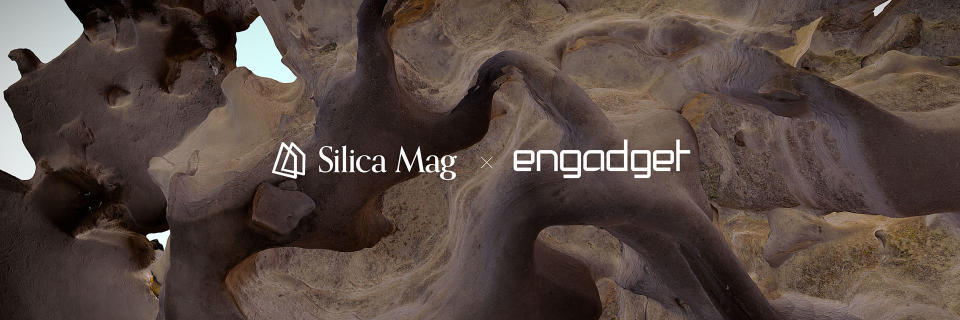
The Dirt Issue
Right now, as we all look out on the world through LED screens, fiber optic networks and glass-paneled windows, the physical earth seems like a distant, intangible abstraction, full of anxiety-inducing news breaks and existential threats. Here, at this strange juncture in our planet's history, we’d like to tell a different kind of story. Not one of fear, death and isolation, but of hope, life and discovery.
Take a moment to visualize where you are... the artificial materials that make up your current environment. From the concrete that covers our homes and cities to the emergency groceries we carry, to the manicured lawns that yawn across our sleepy suburbias, this issue’s hero is all around you, beneath you, within you –– working, building, disintegrating and teeming with unknown complexities.
Welcome to the Dirt Issue.
As Silica Mag’s fourth annual issue, Dirt sets out to explore the ecological, geological and anthropological systems at work beneath our feet. In our collective state of suspended isolation, we’ll take time to dig deep into the vanguard of soil science, land management and fascinating subterranean systems, unearthing some of the Anthropocene’s dirtiest dirt-related secrets along the way.
Engadget will be exclusively publishing six features from Dirt this week, Monday through Saturday. To explore the rest of the issue, head to Silica Magazine.
Monday: How to reverse-engineer a rainforest
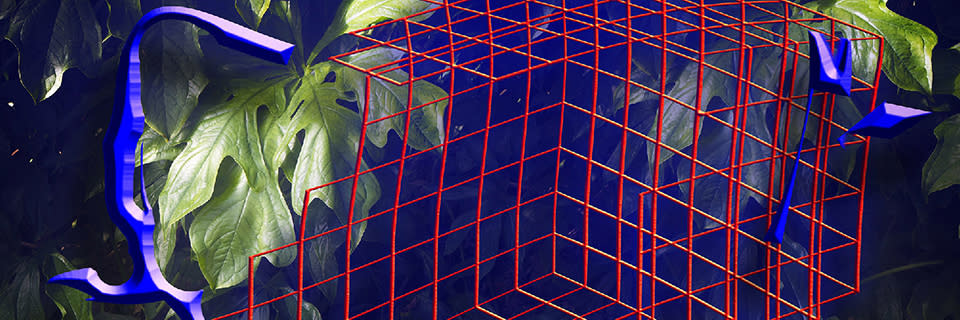
Tuesday: Toxic coast

Wednesday: Indonesia's fight to save its most important soil
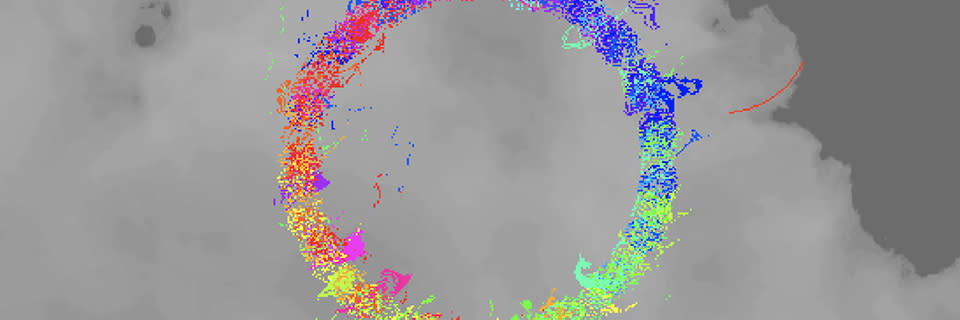
Thursday: Permafrost slump
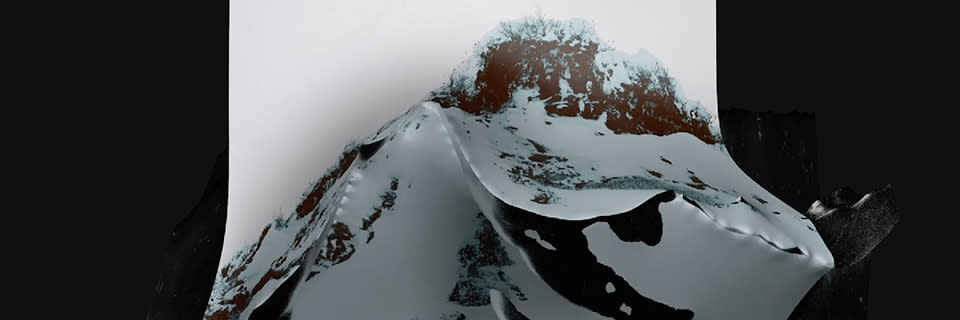
Friday: On Russian terraforming
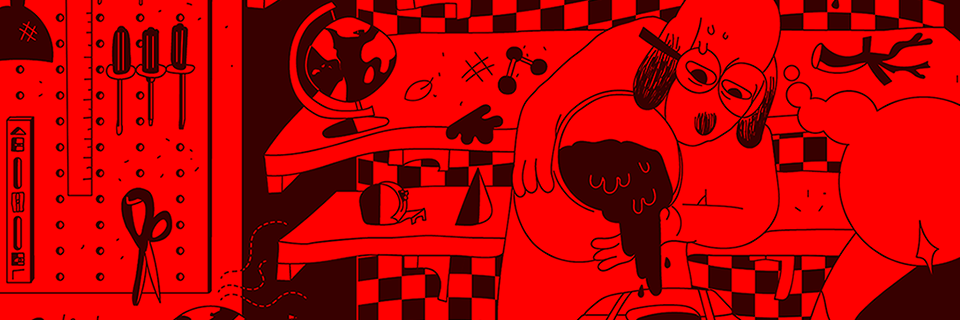
Saturday: Earth’s first off-world colonies will be built on soil
